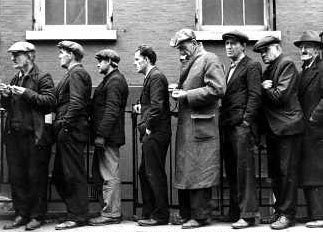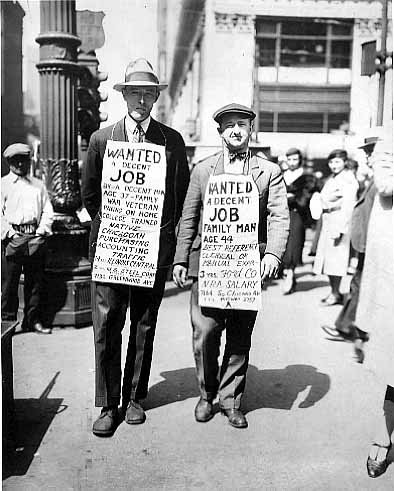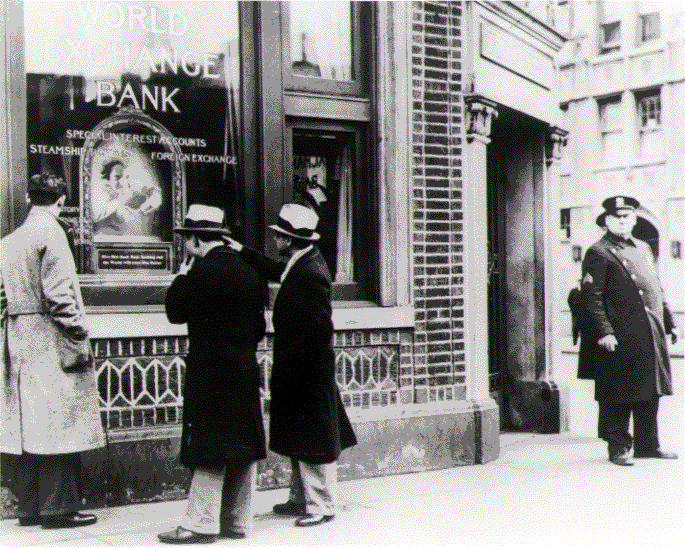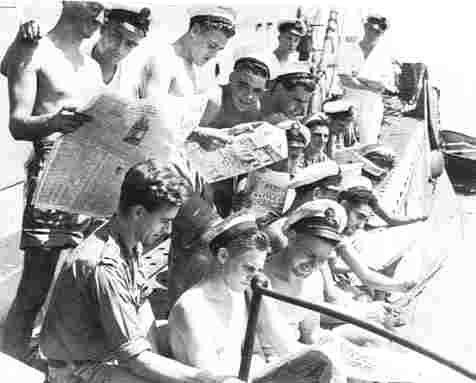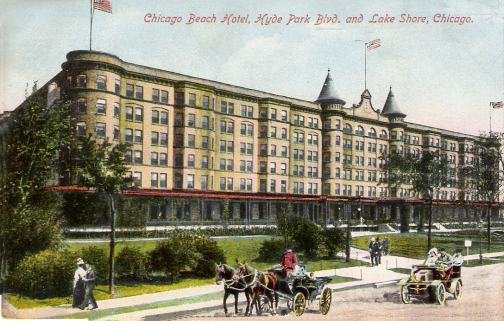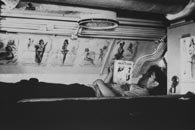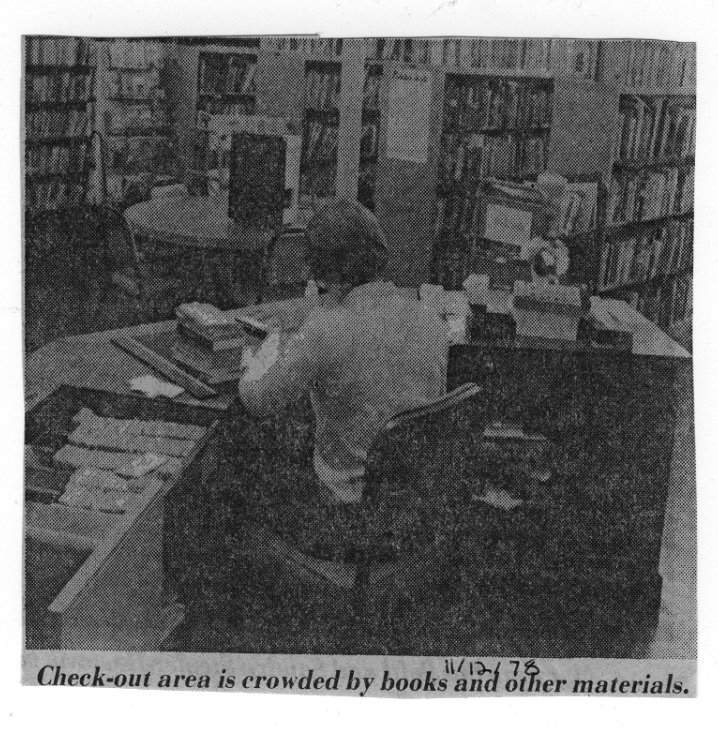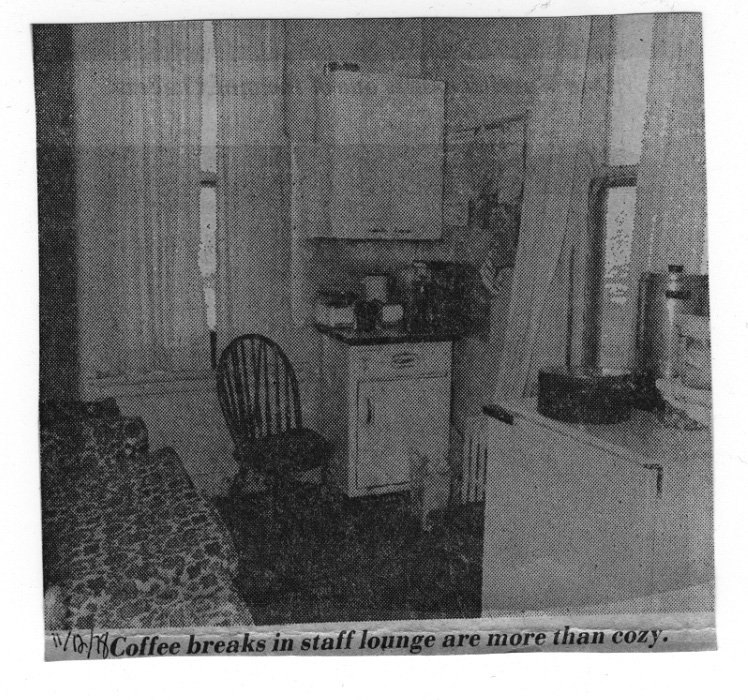The Whiting Public Library – Part Three (Through the Depression, WWII and even a Space Battle) Anthony Borgo November 2023
Due to overcrowding, it was necessary to make some changes to the library’s layout. The auditorium room in the basement was converted to the children’s room. Although the space did not provide much area for stacks it worked nicely considering there was no other option. Supervision over the children was much improved under this transformation. The children also had more freedom because they now had their own space. The Children’s Department closed at 6 p.m. leaving the rest of the library for adults only.
The Whiting Public Library proved to be an even greater asset to the community throughout the Great Depression. Circulation broke the 100,000 item mark for the first time in the library’s history. During this time, more than ever before, people turned to the public library for information and a release from the day-to-day toils. During the depression years, the librarians’ salaries were cut by 10 percent, and it was required that everyone take a 2 week vacation without pay to keep costs down.
In 1931 the Children’s Department entered the annual Fourth of July parade. The children were decked out in costumes depicting their favorite storybook characters. The rag tag group of parade marchers won a blue ribbon, which was fourth prize, for being the largest assemble group in the parade. In addition the Whiting Public Library won a silver cup, first prize, for best in appearance. The impressive silver cup is still on display in the Library’s local history room.
That same year, Head Librarian, Hazel Long appealed to the Board of Trustees to expand the library. However, she was told that lack of funding took precedence over library expansion. The library structure was now housing 20 times the original number of volumes. In addition, the staff work room had been converted to an office for Long.
Hazel Long
Hazel Long left the Whiting Public Library in 1935. Margaret H. Smith succeeded her. During Smith’s tenure two new practices were implemented. In 1939, with the encouragement of Dr. George Thegze, a small circulating collection was established at the John C. Parramore Sanitarium in Crown Point, Indiana. The Sanitarium specialized in the treatment of tuberculosis patients. That same year, the Whiting Public Library, in cooperation with the Girl Scouts of America, started a shut-in service. The Girl Scouts served as messengers dispensing books to home bound members of the community.
In 1940 the Whiting Public Library was again blessed by the generosity of Andrew Carnegie. The library became a recipient of a Carnegie Endowment of books from the International Mind Alcove. The group’s attempt was to provide a deeper understanding and modify prejudice during the war years. The Carnegie Foundation began providing books to libraries four times a year which detailed life and customs in other countries.
The Library was again asked to do its part during World War II. The Whiting Public Library became a War Information Center. It helped to keep the citizens informed by receiving and dissemination selected government publications. The material provided factual information on various phases of the war and civilian participation such as civilian defense and nutrition. In addition, the library was part of the Victory Book Program, joining libraries across the country in a campaign to provide books to the men in the armed forces. Likewise, library staff members, Marguerite Gima and Helen Dugan, volunteered their time as librarians at the Chicago Beach Hotel. The hotel was converted into a serviceman’s hospital during the war.
Margaret Smith ended her service at the Whiting Public Library in 1946. At this time, Janet Granger replaced the position. Over the next three decades, Granger served as the Library’s Director. Throughout the 40s, 50s, and 60s the Library’s growing collection put stress on the bones of the structure. A building which once held 2,588 items in 1906, had grown to 52,551 volumes by 1969. The overcrowding had reached a critical state. The library during this time had 10,000 square feet of materials crammed in 5,600 square feet of space. Again the library’s appeal for expansion was met with disagreement from the Library Board.
Janet Granger resigned from her position as Director in December, 1969. Eleanore Wittenberg succeeded her. During Wittenberg’s tenure, discussion over the future of the Whiting Public Library grew to a fever pitch. There were three options during this period. One, remodel and expand the original Carnegie Library. Two, tear down the library and build a new structure. And three, move the library and its items to City Hall. Fearing that the beloved Carnegie library would be demolished, the Friends of the Library started a “Save the Library” campaign.
Once it was decided that the Carnegie Library was to be saved, the Library Board hired the architectural firm of Wendt, Cedarholm, and Tipens Inc. from Winnetka, Illinois to present a feasibility study. The report outlined drawings, which featured cost analysis and space development. After receiving the study, the Board of Trustees made the final arrangements to expand the 75-year old Carnegie Library.
During this time the library had three Interim Directors: Charlotte Haynes served from May 1979 to June 1980; Judith Stilley served from July 1980 to November 1980; and Claudia Spebar served from November 1980 to January 1981.
The Board of Trustees finally hired John Dingledy as Library Director in January, 1981. Groundbreaking for the renovation, which doubled the size of the original library, was held in May of 1981. The estimated cost of the construction and new furnishings was $1 Million. The Winnetka Architectural firm was able to blend the new addition with the original Carnegie structure. In addition, the original structure’s bricks were cleaned and the sandstone foundation was re-stained to match the new color scheme.
John Dingledy stepped down as Library Director on April 30, 1982. Claudia Wachel (nee Spebar) was hired to serve as Dingeldy’s replacement. Wachel had previously served as the Library’s Interim Director from November 1980 to January 1981. Claudia Wachel would remain as the Whiting Public Library’s Director for the next decade.
On July 25, 1982, the Whiting Public Library held a rededication ceremony for the renovated structure. While maintaining the aesthetics of the original Carnegie building, the interior was now transformed into a modern and efficient facility. The arched rooms now offered a browsing room with periodicals and audio / visual room. The children’s department was expanded and it included an outdoor reading court. A 100 seat meeting room was also established to meet the needs of Whiting’s various clubs. In addition, the renovation provided much needed work space for the library staff.

